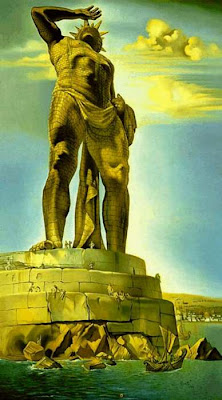I have a special guest post for you today. Thank goodness, because I can still totally use the help. So if there are any other aspiring bloggers out there who missed out on the first go-around, I am welcoming ongoing submissions of interest. Just shoot me an email at rachel.perls [at] gmail [dot] com with some links or samples of your writing, a wee bit about yourself, and ideas for an article you'd like to write for Hue.
Today, Jessica Roberts joins us from her blog
Verve! color. design. life. She creates
art based on paint names and is just starting her journey as a color consultant. Be sure to stop by and check out her blog.
How do Paint Colors Get Their Names?By Jessica Roberts
Pick up any paint sample and look at the name. How do you react? Does it remind you of a distant memory or is it “What the heck where they thinking?!”
Paint color names also have a habit of being vague. Could you tell me what color family SW6707 Narcissus, SW6022 Breathless, or SW6521 Notable Hue would be found in? Here are the colors above; can you match them with the correct one? (*Answers at end of article)
From a linguist’s point-of-view, English only contains eleven basic color “labels” – red, blue, yellow, purple, green, orange, pink, white, black, and grey. There are obviously many ways to describe a color, but those are secondary describing words that are subjective and abstract. So, this brings us back to it: how do paint colors get their name?
Well, it looks like it all boils down to marketing a product. The names need to be memorable to leave an impression on the customer. Most paints have numbers to categorize them, but no one really stands in their home and rattles off that part of the paint name.
If you are standing at your local paint store and you see Socialite (a reddish purple hue) and you love having people over, you might pick that shade over River Rouge, which is very similar if you are undecided.
Apartment therapy did a
poll on if people picked color based on the name. 54% said sometimes! Names play a big part in being able to sell the color.
To gain some insight on how one might pick out names for products, I asked copy editor Melody Alexander of
Deep Group to give a quick and albeit simple run down. Here is what she had to say about names leaving the right impressions on consumers and the way she works:
“When a company comes to my agency to name any product, we try to find the one thing that makes it stand apart from the competition. As a copywriter, my job is to dig deep to come up with ideas that show a deeper meaning. It might be a word that describes what it is in a different language. A god or goddess that symbolizes what it may be in some ancient culture. A word play that hints back to whatever the product is. Or, in this, it might be a playful name that subtly ties back to the color.

For example, if we’re given a bright yellow to name, I might come back with a list of 30 names that includes Amarillo (Spanish for yellow),
Helios (the personification of the sun in Greek mythology), or Duckie for a playful name.
In any case, we’ll come back with a laundry list of name variations that our team finds best suit the project specifications. We make our recommendations, but it the decision ultimately comes down to our clients, and what it is they want.”In the end, the paint companies are marketing a product to consumers. They have to be careful not to use a name twice or duplicate a competitor's, while creating a memorable impression. It is no wonder the names range from vague to ridiculous. Just for fun, test more of your naming color power with this
online game.
What paint names have left a lasting impression on you? Will you go back to a particular brand because you remember a name from that deck?
*Answer from right to left: Breathless, Narcissus, Notable Hue.
























